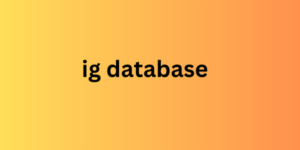However, behind this powerful tool lie significant challenges, including the presence of biases that can influence the results . While some of these biases are intrinsically linked to the user's posture, others can be initiated by the behavior of the moderator and/or the observer.
In this article intended for moderators and observers, expert or "novice", we give you practical advice, the postures to adopt, as well as the pitfalls to avoid. Obviously, the idea is to guarantee the most precise and significant data collection possible during your user tests. But before we begin, let's quickly recall what a user test is.
The image shows two people sitting together in a bright environment, chatting and working on a laptop, representing a collaborative and dynamic setting.
What is a user test or “usability test”?
Also called "usability testing", user testing is the most effective method for evaluating the ergonomics and user journey of a digital product (website , application, etc.). It not only allows you to directly observe how the user understands and uses an interface or a digital product, but also to identify the difficulties they encounter . User testing provides concrete answers to the questions of UX Designers , designers and clients.
Depending on the digital project (creation or redesign of a website, an intranet or an application), the user test may be carried out from the start of the project: on the existing site or during the mock-up phase.
Webinar
How to succeed in your user tests?
Watch the webinar!
What posture and attitude should you have?
On D-Day, everyone has their own role. Ideally, it is advisable to form a moderator/observer pair . The moderator or facilitator guides the user during the test, the observer observes and takes notes.
Note that depending on the size of the project, the allocated ig database budget or the test conditions, it is possible that the same person plays both roles.
Then, the pair must find a certain balance in their postures . Each will have to, at the same time, put the participant at ease (extroverted posture) and create an intimate setting (introverted posture).

When conducting a user test, eye contact is important . After asking a question, the moderator should maintain eye contact, while the observer should look at the interface, mockup, or prototype while performing a task.
Careful posture is important. Do you know the principle of mimicry and mirroring ? Users often adapt their behavior to yours. In order to encourage natural behavior from participants, it is best to pay attention to this. Otherwise, your posture could lead to unwanted reactions.
And what positioning in space? Here too, nothing is left to chance. The prototype must be positioned between you and the user to form a triangle .
If a third person is present during the test (a support person or someone internal to the project who does not have a specific role), they must stand back.
Please note that if you are conducting a filmed interview, it is important that the camera is framed on the user's face in addition to the screen. Ideally, another camera should be oriented towards the faces of the moderator and the observer. The goal? To analyze the situation as best as possible.
Penultimate point, you must look for contrary signs in the intonation of the participant's voice, in his gaze, in his head movements, etc. Indeed, the moderator must be attentive to all these signs so as not to miss an opportunity to bounce back on a situation, to discern a subtle reaction, or to deepen an observation or a difficulty.
Finally, before starting the test, it is appropriate to explain to the participants the concept of " think around " or "thinking out loud" . The goal is for them to verbalize their thoughts, impressions and decisions throughout their interaction with the product to be tested.
What should you do and what should not you do when conducting a user test?
As you will have understood, conducting an interview is not an easy thing. Upstream, there is the protocol to supervise the user test, and on the day, the posture and the right attitude to have. Now, here is our last advice.
In this final part, we have listed the best practices for the moderator/observer pair , namely everything they should do and absolutely not do.